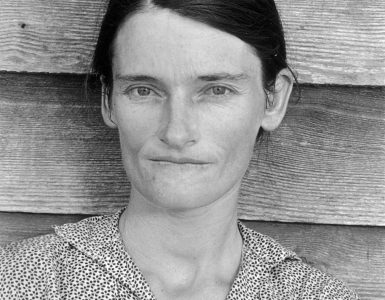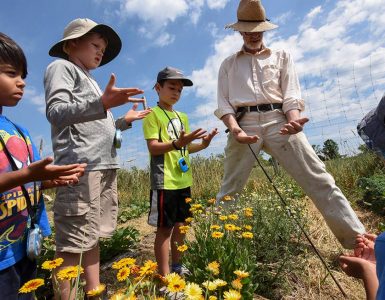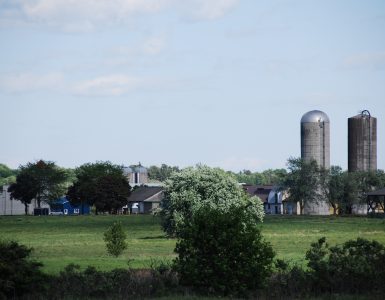Once again, the year comes to end with temperature records; 2016 was the warmest year in history, by disturbingly large margin.
I’ve written here before about the extreme weather we experienced on the farm, from record-breaking snowfalls to record-breaking droughts in the same year.
Though rain and snow have returned to eastern Ontario, lakes and rivers are still low in our area, and the global emergency has worsened. Climate studies from around the world have made it clear that we are on track for worst-case-scenario warming, very possibly a rise of 5-6 degrees Celsius within this century.
To put that in perspective: when the planet was only 4 degrees cooler, most of Canada was covered in an ice sheet a kilometer thick. We’re looking at a much greater change in the opposite direction, within the lifetime of children now being born.
Global warming is more extreme in northern areas and continental interiors, meaning that much of Canada could experience warming of twice the global average: 10 degrees or more.
It’s hard to imagine farmers in Canada being able to adapt to the extreme weather that would bring, let alone farmers in in poorer, hotter, and drier parts of the world.
The bottom line: If you want your children and your children’s children to be able to eat, we need to stop climate change now.
Meanwhile, the next President of the United States is someone who claims global warming is a Chinese hoax, and who is already stocking the White House with climate change deniers and oil company executives.
In recent weeks Prime Minister Trudeau has unveiled a climate change plan, but also approved two new export pipelines out of the tar sands. And he’s made supportive noises about another pipeline, Keystone XL, which Trump has likewise expressed interest in resurrecting; the two seem likely to collaborate.
Make no mistake: further expansion of the tar sands would be an irreversible disaster for future generations. Conventional oil and gas are bad enough for the climate, and the tar sands produce far more greenhouse emissions for the energy they yield. NASA climate scientist James Hansen speaks about tar sands expansion in apocalyptic terms, bluntly warning it would mean “game over for the climate.”
As far as tar sands pipelines are concerned, Trudeau has done little to distinguish himself from Trump. I fear that future generations—if faced with runaway climate change—may see no real difference between Trudeau and Trump on global warming.
It should be exceptionally clear at this point that governments alone cannot and will not prevent catastrophic climate change.
What can stop it? People who take action.
We have seen, in the last month, the huge progress made by people fighting against the Dakota Access Pipeline. The US Army Corps of Engineers rejected an easement needed to complete the pipeline.
And the single pipeline rejected by Trudeau last month—Enbridge’s Northern Gateway pipeline—is has been the target of years of resistance. There is a six-year-old encampment built on the proposed pipeline route in unceded Unist’ot’en territory.
When people take action, it works.
These people are fighting for all of us. They are fighting against climate chaos, and for a livable future.
It’s our responsibility—as people who eat and otherwise need the Earth to stay alive—to support people fighting against these pipeline expansion projects. Fortunately, more and more people see that.
I hope that you personally will support them, not just by clicking “like” on social media, but by donating to a group like the Indigenous Environmental Network.
I support these groups, because the future of our farm depends on it. And so does the future of our planet.
Aric McBay is a farmer and author. He’s also a member of the National Farmers Union, which recently passed a resolution in support of land and water defenders like those at Standing Rock and Unist’ot’en.







